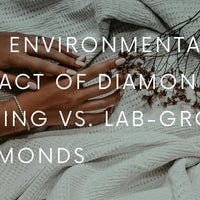Sustainable fashion is quickly becoming more than just a trend. People find it a movement toward better choices for our planet. One of the renowned fashion designed and businessmen once said
“In order to be irreplaceable, one must always be different. - Coco Chanel”
Yes, in order to be the talk of the town, you have to offer something that people can’t resist using. And when we talk about fashion, technology definitely plays a crucial role in bringing about changes. The concept of sustainability is something to cherish.
Certainly, sustainability is no longer limited to the workshops of big brands. It has actually become the choice for every other brand.
With every purchase, consumers are now empowered to make a positive impact, guided by clear information about where and how their clothes were made.
In this post, we will walk you through how technology is taking over the fashion industry.
Eco-Friendly Materials and Production
In recent times, innovations have been made in biodegradable and recycled materials. Businesses are using materials that are not only sustainable but also require less effort to create clothing.
This is how innovations in the sustainable fashion industry are setting new standards with the use of biodegradable and recycled materials. These materials are completely eco-friendly and pave the way for a new aesthetic in fashion design.
Advancements in technology are critical in minimizing the environmental impact of production processes by reducing the use of water and energy. These technologies enable more efficient manufacturing methods that are better for the planet and economically beneficial for producers.
Supply Chain Transparency and Efficiency
The implementation of blockchain and artificial intelligence (AI) in the fashion industry has revolutionized the way we track material sources and manage production processes.
These technologies ensure greater transparency and efficiency, helping brands maintain ethical standards and reduce waste.
But if you are wondering how technology helps ensure ethical practices and reduce waste. Here’s what you need to know.
Technology plays an important role in enhancing the transparency and accountability of fashion production. It beautifully tracks garments' lifecycles, ensures ethical practices are upheld, and minimizes waste throughout the supply chain.
The Power of Digital Tools
Digital tools are rapidly reshaping the fashion industry's landscape, from design to sales and marketing. These tools are vital for modern brands that want to stay competitive and appeal to a tech-savvy consumer base.
That said, photos, videos, and reels are new trends that fashion businesses are following nowadays. And the latest devices like Macbook and hybrid laptops, are actually changing the workings of the fashion industry. And that’s why learning about how you can edit photos on mac or find easy ways to give life to your photos is a must.
After all, effective imagery can significantly attract customers and boost business. Gaining these skills through reliable online resources can provide long-term benefits, helping you to showcase your brand and engage with your audience effectively.
Enhanced Design and Customization
The role of 3D printing and AI in creating custom-fit garments is unmatched. They are actually transforming traditional fashion design by allowing for more precise and customized clothing production.
And this leads to reduced material waste and enhances customer satisfaction with perfectly tailored garments. Furthermore, the use of virtual and augmented reality tools helps in the design process. They provide designers with innovative ways to visualize and adjust their creations in real-time, enhancing creativity and efficiency.
Marketplace and Consumer Interaction
The rise of eCommerce has provided a significant platform for sustainable brands to reach a wider audience. These platforms allow brands to market directly to consumers, reducing the carbon footprint associated with traditional retail.
Mobile apps and online platforms are increasingly influential in promoting sustainable buying choices. They provide consumers with information on the sustainability of products, helping them make informed decisions that align with their values.
Challenges and Future Outlook
Despite the significant advancements, integrating new technologies into sustainable fashion presents several challenges. High costs often accompany the adoption of cutting-edge technologies, making it difficult for smaller brands to invest.
Additionally, the complexity of these new systems requires significant changes in existing infrastructure and processes, which can be a daunting task for many companies.
Indeed, there are many challenges, but those who want to grow will definitely find a way out. So, don’t think much about these hurdles. Just focus on the possible solutions.
Wrapping It All Up
The integration of technology in sustainable fashion is not just transforming the industry. In fact, it is redefining the way we think about and interact with fashion. As we continue to innovate and use these technologies, sustainable fashion will move from a niche market to a standard practice, influencing broader changes in consumer behavior and industrial processes. So, you can also try new things and watch your fashion business grow.







0 comments